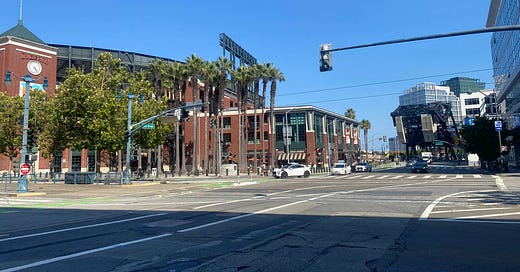'I trained AI then it took my job'
This week, I have been visiting the San Francisco Bay Area where driverless cars can now take passengers. Technology companies such as Waymo operate autonomous vehicles in different parts of the US, including busy downtown areas, and in the case of Phoenix, Arizona, on freeways too.
The Uber driver that collected me from San Francisco airport explained he moved from Uber to Waymo during the covid-19 pandemic to benefit from more secure employment. He moved for sick pay, health insurance and other aspects of compensation that contributed to better workplace health, which was particularly important to him with the increased economic as well as health uncertainty that came with the covid-19 pandemic.
His role with Waymo was human expert driving tuition of autonomous vehicles. He would sit in the driver’s seat and manually override any errors while the AI was learning. As the technology progressed, the vehicles could drive themselves without the need for human copilots. His role became redundant and he was made redundant. So he moved back to drive for Uber. Now he is uncertain about his future as a driver at all if roll out of autonomous vehicles becomes more widespread.
This is an interesting example of the impact of technological advancement on employment:
Technological innovation can lead to new roles with better working conditions
With time, technology can surpass the need for humans in those roles
Individuals are better compensated for training machines on how to undertake a role than when simply doing the role. But, once the technology is trained, humans are no longer needed and therefore the move up the employment security ladder is difficult to maintain. This is just one example of job creation and job displacement secondary to AI.
Lara’s take
AI presents both opportunities and challenges in the jobs market. Humans have a role in enabling and maintaining automation which has always improved working conditions overall. But society must be conscious of how AI is being adopted in order to truly reap the benefits of new technology. Understanding where and how humans continue to add value in products and services is essential to leverage technological progress throughout the socioeconomic ladder. We need to be one step ahead if we do not want to be left behind.



